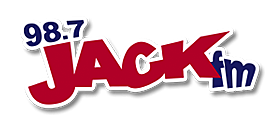
Who Invented the Mash-Up?
The mash-up as a form of music presentation has really taken off in the 21st Century, but who created the first mash-up and where did the form of presentation come from? It turns out there's a long history leading up to phenomenon of two (or more) known songs overlapping through a mutually shared beat.
Who Invented the Mash-Up?
While there are several instances of music releases that are key to forming what eventually became the mash-up, many point to singer-songwriter Harry Nilsson as recording the first mash-up as part of his 1967 album Pandemonium Shadow Show. It was on that record that he issued the song "You Can't Do That."
Though the song was a cover of the Beatles song of the same name, and Nilsson managed to re-arrange the song at a slower tempo and work in references to 18 other Beatles song lyrics into the mix, all brought together over a similar beat. Though the song stalled out on the U.S. charts, it did climb into the Top 10 in Canada.
Harry Nilsson, "You Can't Do That"
Were There Precursors to the Mash-Up?
The answer is: Yes! The earliest hint that something resembling a mash-up might be coming was Charles Ives' "Central Park in the Dark," widely considered to be the first sound collage. It was composed in 1906 for a chamber orchestra. The piece has been paired with The Unanswered Question as part of "Two Contemplations" and with Hallowe'en and The Pond in "Three Outdoor Scenes."
Charles Ives, "Central Park in the Dark"
But, bringing this discussion into the rock 'n' roll era, the next significant movement came with 1956's "The Flying Saucer." In this case, Bill Buchanan and Dickie Goodman would collaborate to reconstitute some of the popular music of the day into a skit in which an interview was being conducted with the answers coming in the form of musical snippets of popular songs. In this case, the interviewer was attempting to get the story from the sight of a flying saucer landing with music from The Platters, Little Richard, Fats Domino, Elvis Presley and more laying out the story.
This novelty record drew the ire of music publishers who had not agreed to the music being sampled in such a manner. A lawsuit followed, but a judge refused to issue an injunction on the record, noting that it was an "artful and clever" parody.
Goodman would go on to have a solid career, using a similar technique to feature popular songs of the day. "Mr. Jaws" was his biggest hit, reaching No. 4 in 1975 with Goodman doing an interview based around the events in the popular film Jaws.
Buchanan & Goodman, "The Flying Saucer, Pt. 1 & 2"
What About the Medley Craze?
Though Harry Nilsson often gets the credit for the first mash-up, the performance form didn't exactly catch fire from there. Artists still tried out different presentations until we got to the mash-up form we know today. One of the more popular presentations started to take hold around the late '70s / early '80s.
The Dutch novelty act Stars on 45 (or Stars On as they later became known) took to recreating popular songs in medley form. In January 1981, while releasing a full album of medley offerings, the self-titled "Stars on 45" song, which primarily took Beatles hits and added a few other '60s favorites over a danceable disco beat, caught fire.
The track hit No. 1 on Billboard's Hot 100 and prompted two other similarly approached medleys showcasing Beach Boys music and well known classical music pieces that both had chart success as well.
"The Beach Boys Medley," arriving later in 1981, pulled together eight of the legendary band's classic songs into one danceable medley. It peaked at No. 12 on the Billboard Hot 100. Then came the Hooked on Classics album, featuring a titular medley with the works of Tchaikovsky, Beethoven, Bach, Rimsky-Korsakov, Mozart, Gershwin and more. It peaked at No. 10 and earned a pair of Grammy nominations.
Stars on 45, "Stars on 45"
The Mash-Up Cracks the Charts
As stated, it would be a while before the mash-up started to garner traction again. But one of the first pairings to get some attention was 1983's "Do It Again Medley With Billie Jean" from the Italian outfit Club House.
Michael Jackson's Thriller album was the biggest thing in the world in 1983, with his single "Billie Jean" serving as the breakout track. But the creators in Club House noticed a similarity with the '70s hit song "Do It Again" from Steely Dan, using the Steely Dan lyrics over the Jackson beat, really offering up one of the first instances of a modern day mash-up
Though dubbed a medley in the title, it's really more a mash-up, and it became one of the first charting successes for this form of presentation, cracking the Billboard Hot 100 at No. 75. However, it became a Top 10 single in Belgium, Ireland, the Netherlands and the U.K.
Club House, "Do It Again Medley With Billie Jean"
Another mash-up chart success came in 1990 when Norman Cook (who would later become known as Fatboy Slim) earned at No. 1 song with Beats International on the track "Dub Be Good to Me." The song paired up the SOS Band's "Just Be Good to Me" with The Clash's "The Guns of Brixton."
Beats International, "Dub Be Good to Me"
The Mash-Up Craze Explodes in the 2000s
Mash-ups started to become more prevalent in clubs in the early 2000s, but they got a surprise run in the spotlight when Kylie Minogue paired up her single "Can't Get You Out of My Head" with New Order's "Blue Monday" during a 2002 Brit Awards performance.
The "mash-up" form got another big, and somewhat unexpected boost in 2004 when Danger Mouse took the a capella samples of Jay-Z from The Black Album and paired them with samples from The Beatles self-titled white album, calling it The Grey Album.
"A lot of people just assume I took some Beatles and, you know, threw some Jay-Z on top of it or mixed it up or looped it around, but it's really a deconstruction," explained Danger Mouse. "It's not an easy thing to do. I was obsessed with the whole project, that's all I was trying to do, see if I could do this. Once I got into it, I didn't think about anything but finishing it. I stuck to those two because I thought it would be more challenging and more fun and more of a statement to what you could do with sample alone. It is an art form."
But the musician never intended it to gain the popularity that it did. Initially limited to 3,000 copies, the music then started to spread through the internet, eventually catching the attention of the Beatles record label, who attempted to shut it down. But Paul McCartney, Ringo Starr and Jay-Z had all shared their approval for the project. While some cease-and-desist letters were served, eventually the label backed off and no chargers were filed against Danger Mouse.
Danger Mouse, "99 Problems"
The Grey Album's unexpected success then led to another Jay-Z mash-up joint, as the rapper connected with Linkin Park and MTV on a project that would eventually become their Collision Course EP. In this instance, the band and Jay-Z planned to pair their respective music together, but rather than just using samples, they all hit the studio together.
"Numb/Encore" became the breakout hit, peaking at No. 20 in the Billboard Hot 100. "Points of Authority/99 Problems/One Step Closer" also was released as a single, while "Jigga What/Faint" and "Izzo/In the End" garnered attention as well. The album debuted at No. 1, making it the first mash-up record to do so.
Then, speaking to the popularity of mash-ups at the time, the "Numb/Encore" collab won a Grammy for Best Rap/Sung Collaboration, while Linkin Park and Jay-Z were joined by Paul McCartney who added "Yesterday" to their mash-up in a Grammy performance.
Linkin Park & Jay-Z, "Numb/Encore"
READ MORE: Metallica + Megadeth Mash-Up Champ Returns With 'Countdown to One'
The mash-up format has continued to thrive throughout the 2000s, even making its way into the gaming world with the DJ Hero game in 2009 and the Fuser video game in 2020. And artists such as Girl Talk, DJ Earworm, DJ Cummerbund, Bill McClintock and more have continued to grow the popularity of the mash-up format.
30 Perplexing Rock + Metal Mashups
Gallery Credit: Philip Trapp

